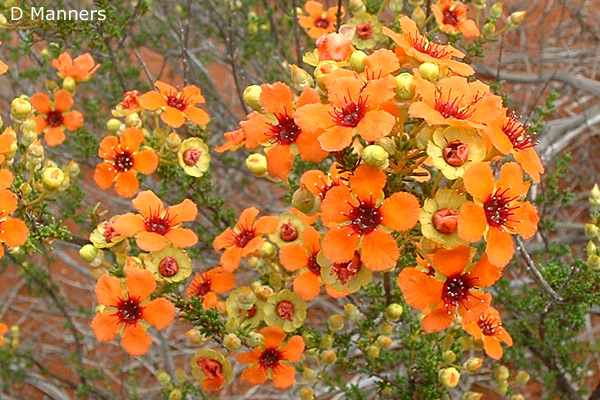General Description:
Pileanthus is a small genus of eight species, all of which occur naturally only in Western Australia. They belong to the myrtle family (Myrtaceae) and their closest relatives include Chamelaucium, Verticordia and Thryptomene.
Pileanthus peduncularis is probably the best known member of the genus and is a spectacular sight in spring with it’s unusual copper-orange (sometimes red) flowers which occur in a massed display. The species is a small shrub to about 1 metre high by a similar width with small, linear leaves to 4 mm long. The large, five-petaled flowers occur in spring and early summer towards the ends of the branches from the leaf axils and are about 18 – 22 mm in diameter.
Although a plant worthy of widespread cultivation, P.peduncularis is not reliable a a garden plant in the wetter, summer conditions of Australia’s east coast. It has been successfully cultivated in Mediterranean-type climates of dry summers and wet winters but, even in those areas, it is not seen in gardens often, probably due to difficulties in propagation. In suitable areas, copper cups prefers a well drained, sunny position and should be tolerant of at least moderate frost.
Propagation from seed is difficult. Cuttings are reported to strike reasonably well, even from short side-shoots about 12 mm long.

Pileanthus peduncularis
Photo: Don Manners
 Australian Native Plants Society (Australia)
Australian Native Plants Society (Australia)